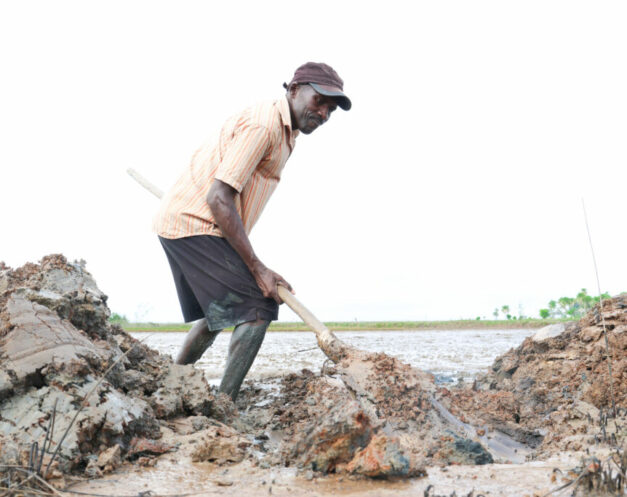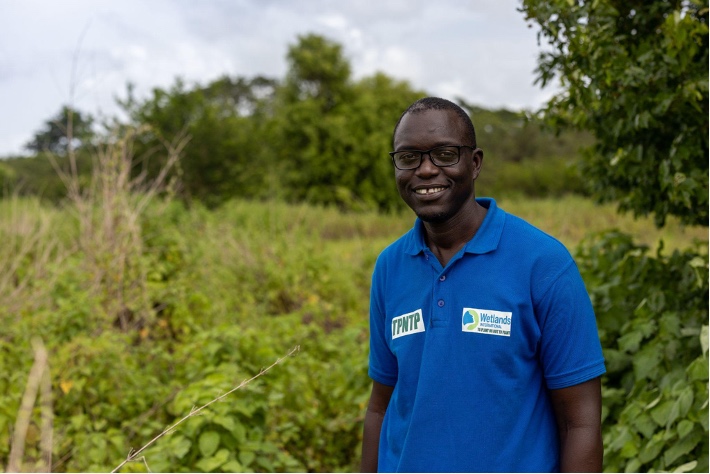To Plant or Not To Plant (TPNTP)

Wetlands International works to rehabilitate mangroves by applying best practices in mangrove restoration and enabling NGOs, government agencies, and communities to effectively scale up their activities. Guinea-Bissau is one of the countries where we are implementing community-based ecological mangrove restoration (CBEMR) on the ground, focusing on the natural regeneration of mangroves, while also helping other countries adopt this approach and move away from traditional mass planting.

Although small on the map, Guinea-Bissau is one of the world’s largest mangrove countries. In its magnificent Cantanhez and Cacheu National Parks and their buffer zones, Wetlands International has naturally regenerated over 2,600 hectares of mangroves.
Home to countless species of fish and other resources, the mangroves are a lifeline for virtually everyone in Guinea-Bissau. Its coasts are also home to the second largest concentration of migratory waterbirds in Africa, marine hippos, and endangered species such as manatees and turtles.
Unfortunately, the parks have been severely degraded by slash-and-burn agriculture, rice cultivation, and overexploitation of natural resources. Many former rice paddies and farmlands have never regained their status as mangrove forests, despite numerous local efforts to restore the area through active replanting. Thousands of hectares remain uncultivated, devoid of ecological and socioeconomic value.
Wetlands International has transformed these wastelands into wetland wonderlands, working with 3,000 community members, national park staff, and local NGOs, with a strong youth presence. Our approach is to help the mangrove regenerate naturally and only plant where necessary to encourage natural regrowth.
Laye Ndiaye, Wetlands International West Africa
Previous planting projects yielded limited results. However, soon after restoring the hydrology, the Avicennia mangrove began to naturally cover the entire area.

As part of the ecological approach to mangrove restoration, we first mapped the hydrology, salinity, acidity, and several other parameters throughout the delta to understand how we could manipulate the system’s levers. It became clear that in many places, the soil had transformed from a muddy substance to a hardened crust due to intensive agricultural development. Under these conditions, mangrove seedlings cannot establish themselves. Furthermore, the salinity levels were too high for the mangroves to withstand.
We broke up the top layer of hardened soil, opened dikes, and dug creeks to improve water distribution and flush salt out of the system. As a result, mangrove seedlings reestablished naturally in most places, even faster than expected. Only a few mangroves had to be planted in areas where they did not regenerate naturally, despite good hydrological conditions. These areas lacked a natural supply of seeds and had unfavorable soil conditions.

You can view this embedded content after accepting YouTube cookies. Community members in Guinea-Bissau are working together to open channels, promoting natural water flow for the natural regeneration of mangroves. To combat overexploitation of remaining and restored mangroves, we are helping 2,500 communities, including those that contributed to mangrove restoration, develop their livelihoods, including gardening and improving dikes for active rice paddies.
Our work has also improved the conservation status of 96,000 hectares of mangroves in Cacheu National Park. In addition, we have prepared for the conservation of Cantanhez National Park. We also support schools by providing new equipment and providing environmental education, and we are raising awareness of the benefits of mangroves in collaboration with local community organizations.
National park staff benefited from our support in biodiversity monitoring and improving surveillance tools to combat illegal activities such as logging and fishing with prohibited nets.
To expand on this successful approach, we catalyzed the creation of PLANTA, the national platform for mangroves in Guinea-Bissau. PLANTA’s objective is to improve coordination and alignment between the various projects and stakeholders involved in mangrove protection. We organized training on best practices in mangrove restoration, and PLANTA members have already successfully restored 490 hectares of mangroves.

En savoir plus sur la restauration écologique des mangroves
Supported by:
Our work to restore and conserve mangroves in Guinea-Bissau is supported by contributions from Otter Fonds, Tűring Foundation, COmON Foundation, Waterloo Foundation, Greenchoice, Salesforce, DOB ecology and the Dutch Postcode Lottery.
Project areas: Castanhez, Cacheu
Donors:


